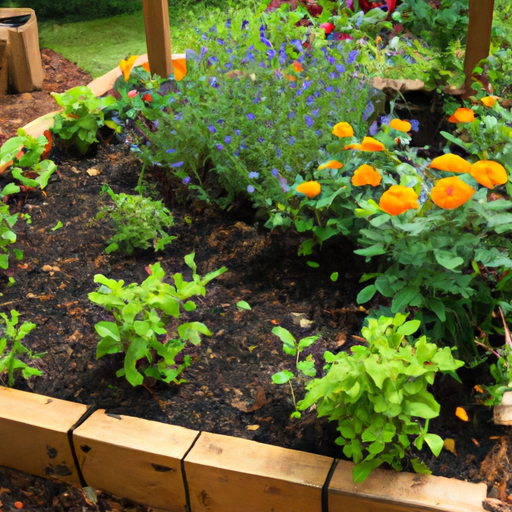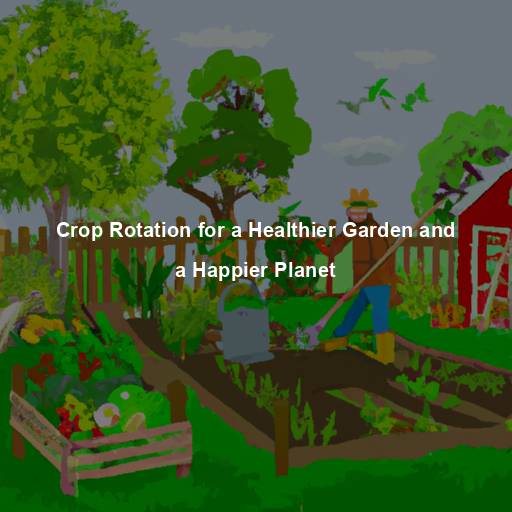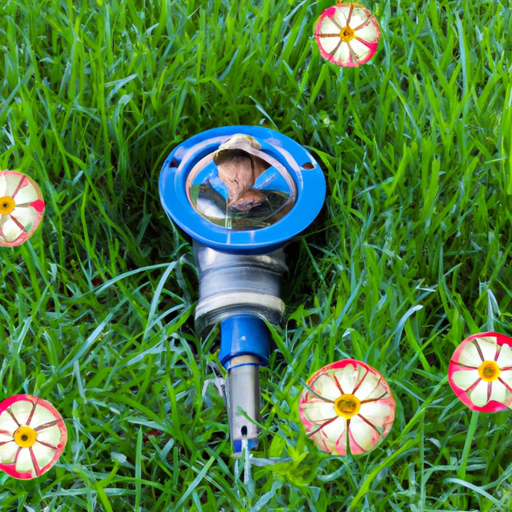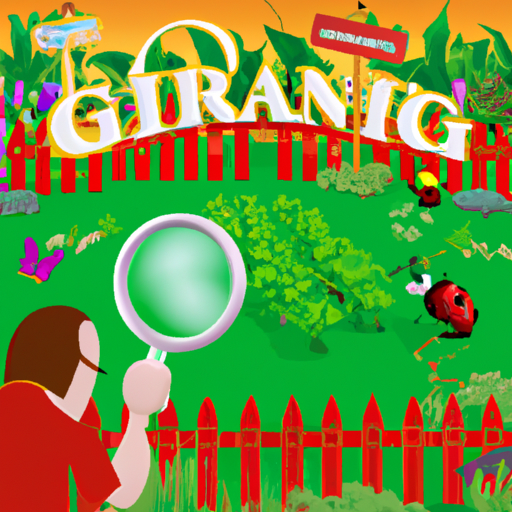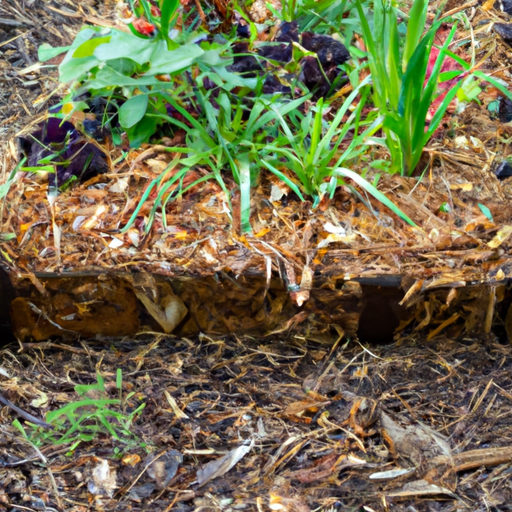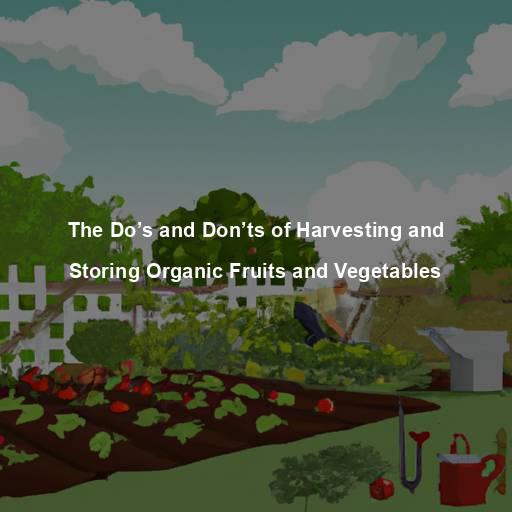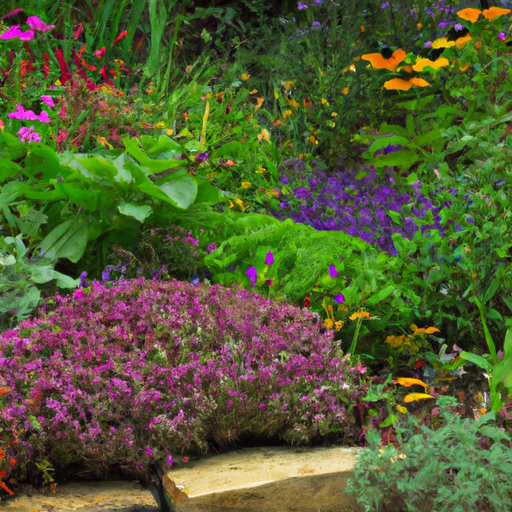Welcome fellow gardeners!
As a Master Gardener, I have spent countless hours experimenting with different planting techniques to maximize the space in my garden.
One technique that has proven successful time and time again is companion planting.
Companion planting involves pairing two or more plants together that benefit each other’s growth and repel pests naturally.
This method not only saves space but also improves soil health, increases yield, and attracts beneficial insects.
In this article, we will explore how to use companion planting effectively in your garden to create a thriving ecosystem of plants that work harmoniously together.
Let’s get started!
Understanding The Benefits Of Companion Planting
Welcome to the world of companion planting! As a Master Gardener, I can assure you that this is a practice worth exploring.
By intercropping plants with complementary characteristics, you not only maximize your garden space but also enhance plant growth and health while minimizing pest problems.
The benefits of intercropping are numerous – improved soil fertility, enhanced nutrient uptake, reduced water usage, and increased biodiversity.
Examples of successful companion planting combinations include tomatoes and basil, beans and corn, cucumbers and radishes, etc.
These pairings work because they either repel pests or attract beneficial insects like bees and ladybugs.
So why not give it a try? You might be surprised by how much more productive and beautiful your garden becomes without having to rely on harmful chemicals or artificial fertilizers.
Choosing Compatible Plant Combinations
When it comes to companion planting, choosing compatible plant combinations is key.
One of the main benefits of this gardening technique is pest control, and selecting plants that work well together can help maximize its effectiveness. For example, planting marigolds alongside tomatoes has been known to repel harmful insects like nematodes.
Additionally, matching plants based on their soil and sun requirements can lead to healthier growth and higher yields. For instance, carrots thrive in loose soil while onions prefer a firmer ground; planting them together could result in stunted growth for both crops.
By considering these factors when pairing up your plants, you’ll be able to create an ecosystem that supports harmonious growth and maximizes your garden space.
How To Arrange Your Garden For Maximum Efficiency
Now that you have chosen compatible plant combinations, it’s time to arrange your garden for maximum efficiency.
Vertical gardening is a great way to maximize space and increase yield in small gardens. Utilize trellises, stakes or cages to train plants upwards and save valuable ground space.
Square foot gardening is another method of maximizing space by dividing the garden into square-foot sections and planting intensively within each section. This technique allows for more efficient use of soil, water, and nutrients while minimizing weeds.
When arranging your garden beds, keep in mind the height of each plant so that taller ones don’t shade out shorter varieties. Additionally, consider grouping together plants with similar watering requirements to make irrigation easier.
By following these tips and techniques, you’ll be able to create a beautiful and productive companion planted garden that maximizes every inch of available space!
Maintaining Your Companion Planting Garden
Maintaining your companion planting garden is like tending to a flock of sheep. Just as you must keep watch over each individual animal, so too must you monitor the health and growth of your plants.
Regular garden maintenance is essential for ensuring that your plants thrive and produce an abundant harvest. One key aspect of maintenance is pest control. By carefully selecting companion plants that repel pests naturally, you can minimize the need for harmful pesticides while protecting your precious crops from damage.
Additionally, it’s important to water your plants regularly, provide them with adequate sunlight and nutrients, and prune any dead or diseased leaves. With proper care and attention, your companion planting garden will flourish year after year, providing you with fresh vegetables, herbs, and flowers all season long.
Tips For Troubleshooting Common Issues In Companion Planting
Now that we have covered how to maintain your companion planting garden, let’s discuss some tips for troubleshooting common issues. Even with the best intentions and planning, problems can arise in any garden.
Here are four things you can do to prevent pests and manage soil:
1. Use natural pest control methods such as introducing beneficial insects or using organic sprays.
2. Rotate your crops each year to avoid depleting the soil of nutrients and reduce the risk of disease buildup.
3. Practice good sanitation by removing diseased plant material promptly and keeping your tools clean.
4. Consider adding compost or other organic matter to improve soil health.
By following these guidelines, you can help ensure a healthy and thriving garden throughout the growing season. Remember that prevention is key when it comes to avoiding common gardening pitfalls, so be proactive in caring for your plants and always stay vigilant for signs of trouble.
With a little effort and attention to detail, you can maximize your garden space while enjoying beautiful blooms and bountiful harvests without having to resort to chemicals or artificial treatments.
Frequently Asked Questions
Can Companion Planting Help Deter Pests And Diseases In My Garden?
Ah, the eternal battle between gardener and pest. But fear not, for there is a secret weapon at your disposal: companion planting.
By strategically placing plants that complement each other in close proximity, you can effectively deter pests and diseases from wreaking havoc on your precious crops.
And when combined with crop rotation, which helps to break up pest cycles by changing plant families every season, you have a powerful natural pest control system at your fingertips.
So why rely on harmful chemicals when nature has already provided us with the tools we need? Trust in the power of companion planting and watch as your garden thrives under its protection.
Are There Any Plants That Should Not Be Planted Together Due To Negative Interactions?
Companion planting is a popular gardening technique that involves growing different plants together to maximize garden space and improve the overall health of your crops.
However, there are some common companion planting myths and mistakes that can negatively impact your garden’s success.
For instance, certain plants should not be planted together due to negative interactions that can harm one or both species.
It’s important to do your research on which plants complement each other before you start planting.
By avoiding these common companion planting mistakes, you’ll be able to create a thriving garden full of healthy, happy plants!
Can Companion Planting Improve Soil Quality And Nutrient Absorption For My Plants?
Improving soil quality and nutrient absorption for your plants is a key aspect of successful gardening. Coincidentally, one way to achieve this is through companion planting.
As a Master Gardener, I highly recommend incorporating crop rotation and intercropping into your garden plan. These practices help prevent soil depletion by alternating crops and allowing different plant species to grow together.
Additionally, utilizing soil amendments and cover crops can greatly enhance the overall health of your soil. By strategically selecting beneficial plant pairings in conjunction with these techniques, you’ll be on your way to maximizing both space and yields in your garden while creating an optimal environment for your beloved plants!
How Do I Know Which Plants Are Good Companions For The Vegetables And Herbs I Want To Grow?
Knowing which plants are good companions for the vegetables and herbs you want to grow is key to reaping companion planting benefits.
Certain plant combinations can help deter pests, improve soil quality, and increase nutrient absorption.
As a Master Gardener, I highly recommend doing your research on companion plant combinations before planning your garden.
For example, tomatoes thrive when planted with basil or marigolds due to their ability to repel harmful insects.
On the other hand, beans should not be planted near onions as they may inhibit each other’s growth.
With careful consideration of these factors, you can create a beautiful and thriving garden using companion planting techniques.
Can Companion Planting Help Attract Beneficial Insects And Pollinators To My Garden?
Attracting beneficial insects and pollinators to your garden is essential for the success of any gardener.
Companion planting can be a great way to do this without using harmful pesticides that may harm both you and the environment.
By intercropping plants, maximizing garden space with companion planting, and choosing plant combinations that attract pollinators, you can create a thriving ecosystem in your backyard.
Remember, nature has always had its own way of working things out, so why not let it help you?
With the right approach, companion planting can enhance yields while also keeping pests at bay.
So don’t hesitate to try something new and see how it transforms your gardening experience!
Conclusion
In conclusion, fellow gardeners, companion planting is an art form that can truly transform your garden.
By utilizing the natural relationships between plants to deter pests and diseases, improve soil quality and nutrient absorption, and attract beneficial insects and pollinators, you’ll be able to maximize your gardening space like a true master gardener.
But remember: just as in life, not all plants get along with each other.
Be sure to research which plants are good companions for the vegetables and herbs you want to grow before diving into your next project.
With careful planning and attention to detail, your garden will flourish like never before – so grab your trowel, put on some gloves, and get ready to create a masterpiece!
